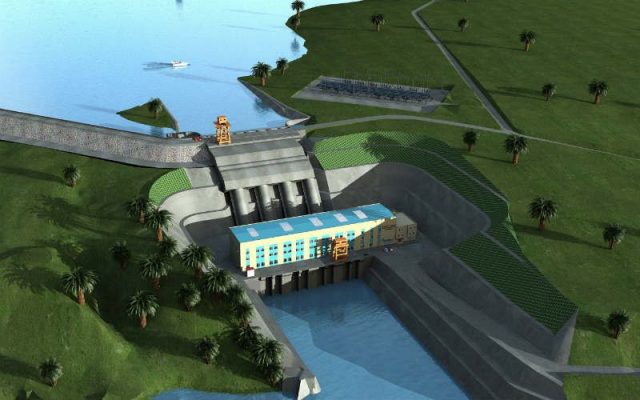- Zambia’s state owned energy utility, ZESCO, has announced that it has an electricity generation surplus of 1156MW following the successful commissioning of 4x150MW capacity from the 750MW Kafue Gorge Lower Hydro Power Station built by the Chinese. Read more
ZESCO Managing Director Eng. Victor Mapani says currently the installed national generation capacity stands at 3,456.8MW against a peak national demand of approximately 2,300MW. Mapani was speaking a high-level Panel Discussion at the ongoing Association of Power Utilities of Africa (APUA) meeting in Dakar, Senegal this past week.
“Currently four out of five units are already commissioned and running. We expect to commission the last 150MW machine, unit 5 by November this year. With this development, and factoring in Independent Power Producers, we currently stand at a national generation installed capacity of 3,456.8MW, against a peak national demand of approximately 2,300MW. We thus have a surplus of 1,156.8MW that is available for trade within the interconnected SAPP network,” said Mapani.
Related news: Zambia’s ZESCO has unsustainable debt of US$3.5 billion
He added that the availability of reliable electricity is underpinning the current rebound of Zambia’s economy. “Since we are able to meet national demand, we have seen Zambia’s economy grow from a receding Gross Domestic Product (GDP) in 2020 to three (3) percent growth in 2021 across all sectors. With this background, we are ambitious that the national GDP growth will soon reach levels of five to seven percent in the next three to five years,” he said.
“The stable economic growth has also seen year-to-year end inflation drop from 21 percent to 9.7 percent in the month of June 2022. Our service virtually services and supports all key sectors including mining, agriculture, commerce, tourism, health and education. We now hope to venture and exploit the transportation sub-sector too through establishment of charging points nationwide to back the evolution of Electric Motor Vehicles,” he added.
Related news: Major incident in Zambia strains Southern Africa Power Pool
Zambia, an established member of both the APUA and the Southern Africa Power Pool (SAPP) is currently undertaking construction of transmission lines to ensure ZESCO remains at the centre of power trading among the Eastern, Western, Northern and Southern African states. ZESCO is currently anchoring the construction of the transmission line to connect Zimbabwe-Zambia-Botswana-Namibia (ZiZaBoNa) Interconnector while at the same time is collaborating on the Zambia-Tanzania-Kenya (ZTK) Interconnector.
Related news: Zimbabwe tries to finalise deal with Zambia to buy 100MW power
ZESCO already operates strong regional interconnectors which include the Kariba 330kV lines to ZESA, Zimbabwe; the Sesheke-NamPower 220kV line to Namibia, the CEC 220kV lines to SNEL in DRC and the Kazungula-Kasane 66kV line to Botswana. Other strong regional transmission lines include cross-border power supplies including the Mafinga-ESCOM 33kV line with Malawi; the 33/11kV border supplies with SNEL (Democratic Republic of Congo) and the Mbala-Sumbawanga 66kV Line and Mbozi-Tunduma 33kV Line to Tanzania.
According to USAID, Zambia’s national access to electricity averages at 31% with 67% of the urban and 4% of the rural population having access to power. Read more
Author: Bryan Groenendaal















